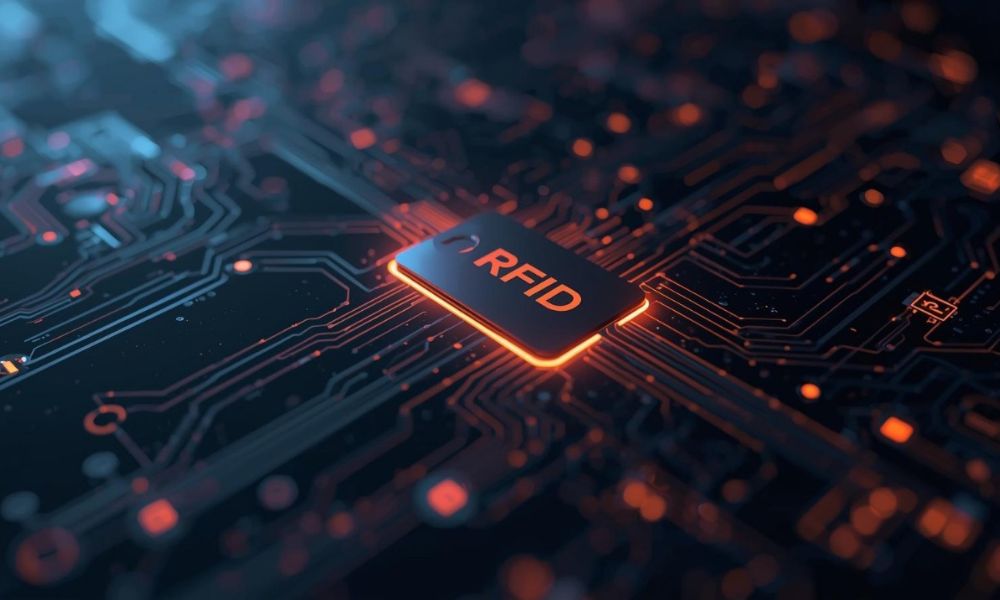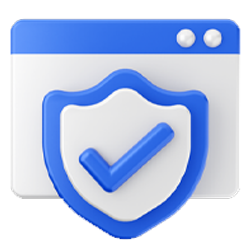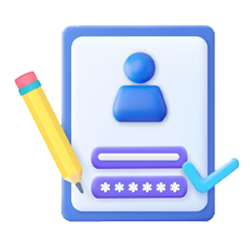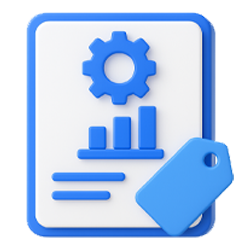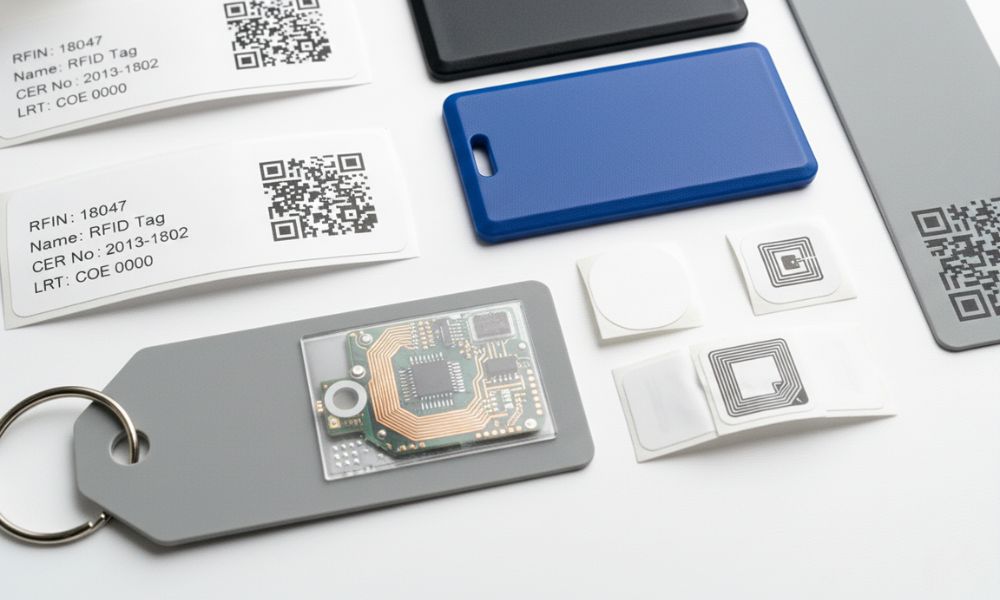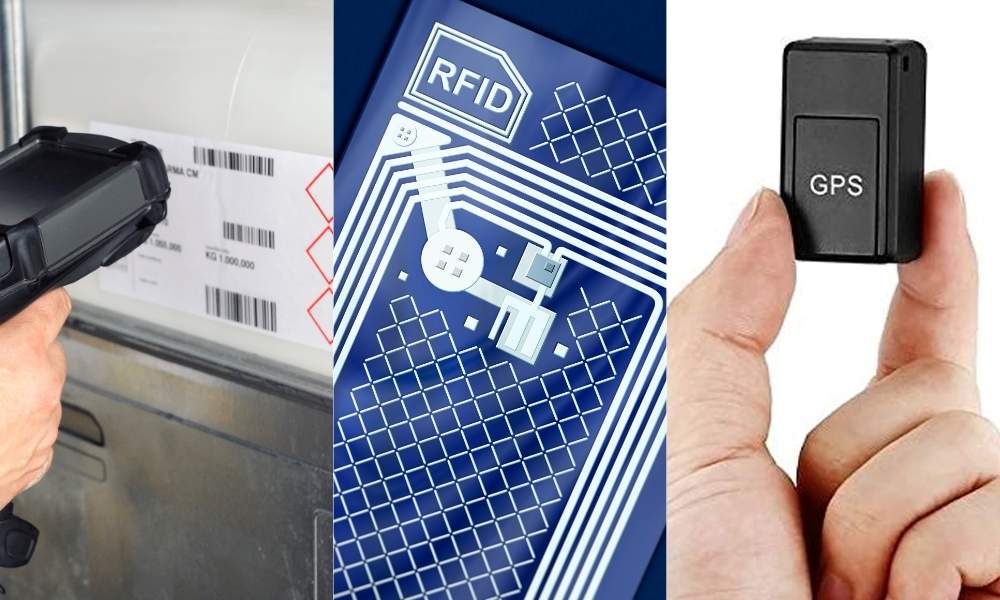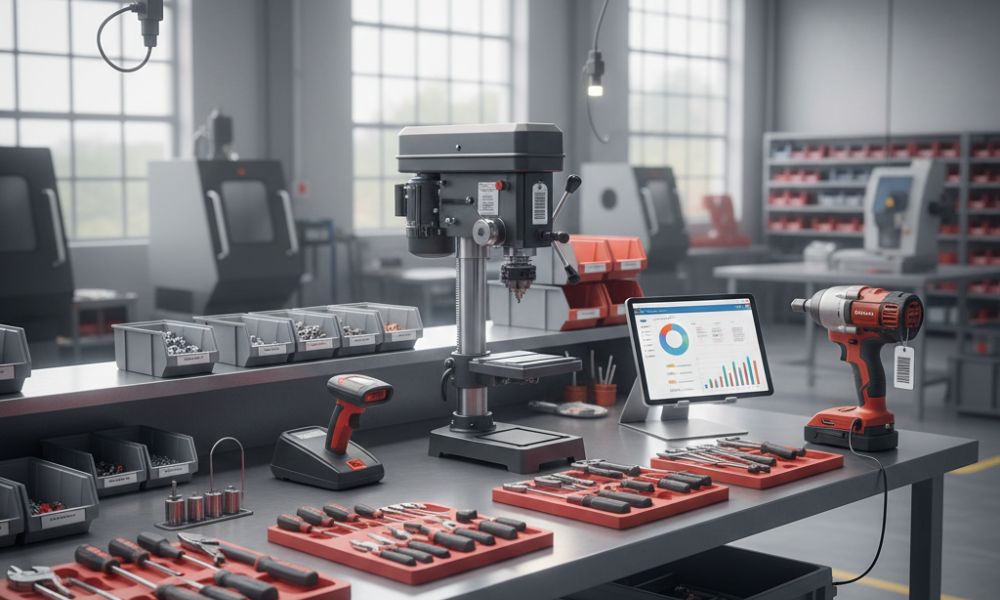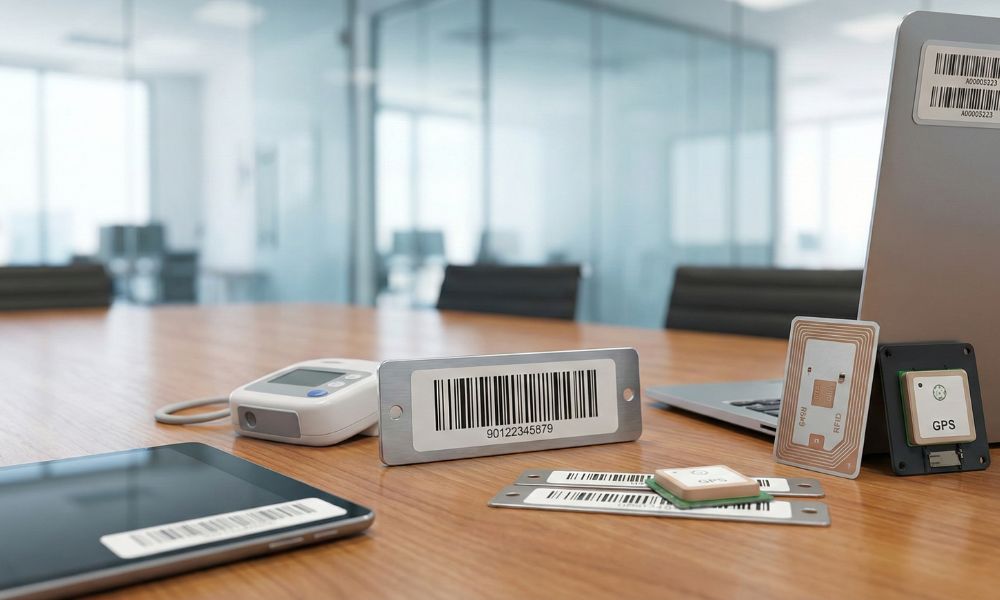Introduction
Global adoption of RFID asset tracking is soaring as organizations seek better control over their physical assets. Equipment loss, time-consuming audits, and data errors are common pain points across industries. This guide demystifies asset tracking using RFID – explaining what it is, how it works, key benefits, real-world applications, costs, and best practices for implementation. It’s written for asset managers, IT, operations, and finance teams as an authoritative reference on this technology.
Explore how RFID technology simplifies asset tracking >>
So, what is RFID asset tracking? RFID asset tracking uses wireless radio-frequency identification tags and readers to automatically identify and monitor physical assets in real time. It requires no manual scanning or line-of-sight, dramatically improving tracking speed and accuracy. In short, tracking assets with RFID is far more efficient and error-proof than traditional barcode or spreadsheet methods.
What is RFID Asset Tracking and How Does It Work?
RFID asset tracking is an automated method of using RFID tags and readers to monitor physical assets without manual effort. Each asset is affixed with a small RFID tag (a microchip plus antenna) that carries a unique ID. When an RFID reader emits a radio signal nearby, the tag draws power from it and responds with its ID.
The reader relays the ID to asset-tracking software, updating location automatically. This wireless process needs no line-of-sight, even through boxes. It can scan multiple tags simultaneously, ensuring faster and seamless tracking. Ultimately, RFID automates asset identification, offering real-time visibility of asset movements and status.
RFID Technology Basics (RFID 101)
RFID stands for Radio-Frequency Identification. It uses electromagnetic fields to identify tagged objects automatically. Unlike barcodes, RFID does not require optical line-of-sight; a reader can scan dozens of tagged items within seconds even if they’re hidden from view. This makes RFID much faster and more convenient than scanning assets one by one with a barcode reader, and it drastically reduces human error in asset tracking.
Components of an RFID Asset Tracking System
An RFID asset tracking system has a few core components working together: RFID tags on the assets, RFID readers to scan the tags, and software to process the data.
![]()
-
RFID Tags:
Tiny transponders (labels) attached to each asset, containing a microchip that stores the asset’s ID and an antenna to transmit it.
-
RFID Readers:
Devices that emit radio waves and receive tag signals. Readers can be fixed (e.g. at doorways) to automatically capture tags passing by, or handheld for on-demand scanning in the field.
-
Asset Tracking Software:
The platform that collects data from readers and updates your asset database. It matches tag IDs to asset records and provides an interface (dashboard and reports) to view assets and set up alerts.
Read more about RFID asset tags and hardware options>>
Active vs. Passive RFID Tags (and RAIN RFID)
RFID tags come in two main types – passive and active – which differ in range, power source, and use cases:
-
Passive RFID Tags:
No battery; they draw energy from the reader’s signal. Range is shorter (a few inches to around 10–30 feet for UHF tags), but they are very inexpensive. Passive tags are typically used for inventory tracking within a facility (tagging IT assets, tools, stock, etc.). “RAIN RFID” is an industry term referring to standard passive UHF RFID technology.
-
Active RFID Tags:
Battery-powered tags actively broadcast signals, offering a longer range of 50–100+ feet. They support sensors but cost significantly more than passive tags. Active tags track high-value or moving assets across large areas efficiently. For example, they monitor vehicles or heavy equipment on-site effectively.
RFID vs. Other Asset Tracking Technologies (Barcode, NFC, BLE, GPS)
This tech isn’t the only asset tracking technology. Depending on your needs, you might also consider barcodes, Near Field Communication (NFC) tags, Bluetooth Low Energy (BLE) beacons, or GPS trackers. Here’s how RFID compares to these alternatives:
-
RFID vs. Barcode Tracking
RFID can scan multiple items simultaneously without line-of-sight, whereas barcodes require manually scanning each item’s label individually in clear view. This makes RFID inventories much faster (minutes instead of hours). Barcodes are extremely cheap per tag, but RFID’s automation saves so much labor that it often justifies the higher tag cost for internal asset tracking.
-
RFID vs. NFC (Near Field Communication)
NFC, a subset of RFID, works at very short ranges of a few centimeters. It usually reads one tag at a time, like tapping a phone. This method suits individual ID checks but limits bulk asset tracking efficiency. In contrast, RFID (UHF) scans multiple tags simultaneously from several feet away effectively.
-
RFID vs. BLE (Bluetooth Low Energy) Beacons
BLE beacons act like active RFID tags, broadcasting Bluetooth signals to nearby devices. They track assets in real-time within approximately 30–100 feet effectively. However, BLE tags are costlier and need battery maintenance compared to passive RFID. BLE suits continuous tracking, while passive RFID offers low-cost, maintenance-free checkpoint scanning.
-
RFID vs. GPS Tracking
GPS trackers use satellites to provide live location data over unlimited range. This suits assets traveling long distances, such as fleet vehicles or containers. RFID, in contrast, tracks assets on-site but cannot follow items remotely. GPS devices are expensive and need power, while RFID tags remain cheap with no fees.
What are the Key Benefits of RFID Asset Tracking?
Implementing RFID for asset tracking can deliver significant benefits:
![]()
-
Higher Inventory Accuracy:
By automating data capture, companies routinely achieve over 95% accuracy in asset inventories (vs ~70% with manual methods).
-
Time Savings & Efficiency:
Tasks that once took days can often be done in hours. Studies show RFID can cut inventory counting time by up to 90%.
-
Reduced Labor Costs:
Less manual tracking means fewer labor hours. One healthcare provider reported 80% fewer hours spent on equipment audits after RFID was implemented.
-
Loss Prevention:
RFID helps deter theft and misplacement by automatically alerting when tagged items move improperly. A hospital saw asset losses drop ~15% after adding RFID tracking and exit alerts.
-
Real-Time Visibility:
You get on-demand insight into where assets are. Managers can instantly locate a specific item (for example, see that a laptop was last read in Room 210) instead of searching for it.
-
Easier Auditing & Compliance:
RFID maintains a continuous audit trail of assets. During audits, you can quickly show that 99%+ of assets are accounted for, greatly simplifying compliance with regulations and policies.
How Much Does RFID Asset Tracking Cost, and What ROI Can You Expect?
RFID asset tracking costs vary widely depending on project scale and complexity. Small businesses spend around $5k–$10k for basic setups. Major expenses include tags, readers, and software, with integration and installation adding extra costs. Vendors often simplify setups, offering training and support to streamline deployments efficiently.
Best Practices for Implementing RFID Asset Tracking
A successful RFID rollout requires more than just hardware – it takes planning and change management. Follow these best practices to maximize your success:
-
Audit Assets and Set Goals:
Do a thorough inventory of your assets and clean up your data before tagging anything. Set clear goals for the project (e.g. “reduce audit time by 50%”) so you can track progress.
-
Choose Appropriate Tags and Equipment:
Use the right type of RFID tags for your assets and environment. For example, metal assets may need special on-metal tags, and rugged areas need durable tags. Test a few tags on tricky items to ensure they read reliably. Pick readers (fixed or handheld) that fit how and where you’ll be scanning.
-
Plan Reader Placement:
Map out where to put readers to cover all critical areas. Identify chokepoints (doors, gates) for fixed readers and decide how to cover any blind spots (maybe with periodic handheld scans). The aim is to ensure that whenever an asset moves or changes location, an RFID reader will capture it.
-
Integrate with Existing Systems:
Moreover, don’t let RFID data exist in a silo – instead, integrate your RFID software with the systems you already use (asset databases, ERP, maintenance systems, etc.). Consequently, scans automatically update your central records, and therefore everyone can access up-to-date information through familiar tools.
-
Pilot First, and Train Users:
Start with a pilot project in a limited area or group. This lets you work out kinks and get feedback on a small scale. Meanwhile, train your staff on the new system – show them how to use readers and explain any new procedures. Getting user buy-in early will smooth the broader rollout.
-
Monitor and Optimize:
Once live, keep an eye on system performance. Ensure readers are functioning and covering the intended areas; adjust antenna positions or power if you find weak spots. Replace any tags that consistently fail to read. Use the data to spot process improvements and continuously fine-tune your setup for maximum benefit.
How to Choose the Right RFID Asset Tracking Solution
With many RFID asset tracking systems on the market, it’s important to evaluate both the technology and the provider. Keep these factors in mind when selecting a solution:
-
Integration & Compatibility:
Make sure the system can integrate with your current software and workflows. Does it offer APIs or built-in connectors to your asset database or ERP? Does it support standard RFID tags and readers (EPC Gen2, etc.) so you’re not locked into proprietary hardware? It should also fit your IT preferences (cloud vs on-premises, security requirements, etc.).
-
Features & Functionality:
-
Scalability & Flexibility:
Consider the scale of assets and locations you plan to track. Can the system handle tens of thousands of items or multiple sites if you grow? Also check if it’s flexible enough to accommodate different tag types or new technologies (maybe you’ll add active tags or BLE beacons later). A scalable, extensible platform protects your investment as your needs expand.
-
Vendor Experience & Support:
Evaluate the provider’s track record and support offerings before making a decision. Check if they’ve executed similar RFID projects within your industry successfully. A vendor with relevant experience better understands your unique challenges and needs. Strong customer support, quality training, clear documentation, and a solid product roadmap indicate a reliable partner.
-
Total Cost & Value:
Compare the total cost of ownership, not just the initial purchase price. Include hardware, software subscriptions, support, and consumables like tags in your evaluation. Watch for hidden expenses such as proprietary tags or extra user fees. Ultimately, choose the solution offering the best long-term value and ROI, not merely the lowest upfront cost.
FAQ’s
Q.How long do RFID tags last?
A. Typically, RFID tags last up to 10 years, depending on quality. Therefore, you can expect reliable tracking for many years. Furthermore, passive tags require no battery maintenance or replacement.
Q.Is RFID better than GPS?
A. For indoor asset tracking, RFID offers higher accuracy and cost savings. Meanwhile, GPS works best outdoors with wide coverage. Additionally, RFID systems consume significantly less power than GPS.
Q.Can RFID pass through metal?
A. Generally, RFID signals cannot pass through solid metal barriers. However, special RFID tags or placements can minimize interference. Moreover, anti-metal tags are specifically designed for metallic surfaces.
Conclusion & Call-to-Action
RFID-based asset tracking revolutionizes how organizations enhance efficiency, accuracy, and security in asset management. As highlighted in this guide, RFID boosts inventory accuracy to over 95% and automates time-consuming manual tasks. It also delivers real-time visibility into asset movements across all locations. Ultimately, RFID transforms asset management into a fast, precise, and effortless process.
Now is an ideal time to embrace RFID asset tracking technology. The tools are more affordable and standardized than ever, and the need for effective asset control is critical in a competitive environment. Companies that leverage RFID gain a clear edge by cutting costs and making data-driven decisions, while those sticking to old manual methods risk higher losses and inefficiency.

